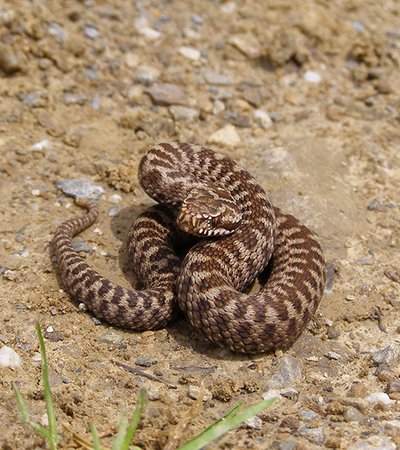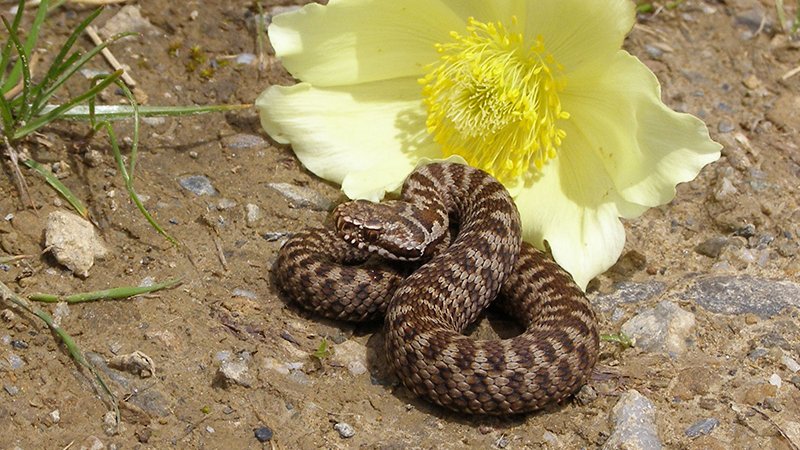(Vipera berus)
Distribution/habitat
After the common lizard, the common adder is the second most widespread reptile worldwide. In the Alps it is found at elevations between 600 to 1,900 m in forest edges and clearings, on wet meadows, fenlands and scree fields. Here it finds sufficient air- and ground-moisture.
Description/characteristics
Rarely found are white, red or black common adders, most are coloured grey to brown. On the back, a darker zigzag stripe mostly runs all the way down the tail. The common adder is a slim viper, which grows to 50-60 cm, in some cases more than 80 cm. Females are usually longer and bulkier than males. One distinctive feature is the slit pupil of the eye. Depending on the altitude in which the snakes live, they wake up from hibernation mid-March to mid-June. The common adder female gives birth to up to 18 youngsters some 2.5 months after mating. If the habitat is very high up, they only breed about every three years. They mainly feed on mice, young birds, frogs and lizards. The prey is bitten, a paralysing venom injected and swallowed whole.
Special features
Common adders are not often seen, as they are shy and immediately flee when facing danger. If, however, they are cornered they will in some circumstances defend themselves by biting. Bites from the common adder are typically harmless, as usually not much venom is injected. Symptoms including swelling and bluish skin around the bite is possible. Difficulty breathing and heart complaints rarely occur. Following a bite, the affected body part should be immobilised.
Endangerment/protection
Common adders are endangered in Austria and protected, as their populations are decreasing. In particular the reafforestation of clearings, the draining of wetlands and intensification of agriculture present threats to the population.



 Natur im Fokus "Kreuzotter"
Natur im Fokus "Kreuzotter"










